So you’re starting a business. You’ve got the idea, the vision, and some dough to cover the first six months.
- Month one goes by, and it’s all good.
- Month two passes, and it’s getting a little tight.
- Month three shows up, and HOLY CRAP—you’re out of money.
Many new companies underestimate how much it costs to become operational and how long it’ll take to get there.
So how can you avoid the financial drain of starting a business? By having a game plan for every cent and creating boundaries BEFORE you spend.
You do this by creating a startup budget, where you’ll estimate all the expenses and potential losses you will incur to open your business.
Sure, making a business budget isn’t as fun as buying all the things on Amazon, but it’s the first step to keeping your business afloat in the long run.
Quick links
- The startup budget template every new business owner needs to steal
- Step 1: Set your total budget number
- Step 2: Categorize your startup expenses
- Step 3: Estimate your losses
- Step 4: Pad your budget
- Step 5: Tighten your budget
The startup budget template every new business owner needs to steal
Copy this free business budget template
A startup budget is like the Yoda of your new business. It’s that little voice that:
- Ensures you have enough cash flow to cover the first few months,
- Helps you determine exactly how much cash you’ll need beyond that, and
- Hits you with a stick when you start to spend all your dollars.
In other words, it’s where you think of everything you’ll possibly need to spend money on (like leasing a storefront or buying your domain name), along with creating a cushion for things that don’t work out (like replacing that designer who was way too into esoteric emojis).
Plus, a startup budget comes in handy when you’re pitching your business to investors, applying for small business loans, and deciding whether you can afford your first employee.
Copy the business budget template above to your Google Drive, and follow these steps to make a startup budget you’ll actually be able to follow.
Step 1: Set your total budget number
Before you make your startup budget, set your budget goal. This is the total you’re willing to spend to start your business.
The reason we set our budget goal first is to establish clear spending boundaries from the beginning. As you work through your budget, you’ll want to spend more than you can afford. (Don’t worry, that’s normal.) But your budget goal will bring you back to reality.
Consider the amount of money you have or can obtain. What’s realistic for you to spend?
Remember, if you’re taking out a loan, you will have to pay it back. Only borrow what you can feasibly pay back. If you’re using your personal savings, don’t max it out in your budget. Leaving a little bit of cushion is important because you always want to maintain an emergency fund.
Step 2: Categorize your startup expenses
Brain dump everything you think you’ll spend money on to start your business and put it in a spreadsheet.
Startup expenses are not ongoing operational costs; they’re the initial things you need to buy to start your business—but that you don’t anticipate spending money on forever.
Get as detailed as possible. Don’t just write “photography equipment.” Write down the exact cameras, lighting equipment, lenses, shoulder bags, and every other thing (small and large) you’ll need to buy.
After you’ve listed everything you need, categorize each item as…
- Essential
- Non-Essential, and
- Later
Essential items are costs that you absolutely must incur to get your business up and running. For example, this could be the cost of a business license.
Non-Essential items are costs that will make running your business easier but are not crucial for its operation. This is subjective, but use your best judgment here. A Non-Essential item could be the cost of a designer creating a logo for you. While it would be nice to have, you could still open your business without one.
Later items are things that can be put on hold for six months. These might be costs associated with scaling your business, like photography equipment for bigger gigs. If it won’t slow down your business growth, it’s probably a Later cost.
Real talk—you’ll probably want to spend more than you have access to. Prioritizing your expenses now helps you make those hard decisions later.
For each Essential and Non-Essential item, estimate how much you’ll spend.
Remember to include the costs within the costs. For example, a website costs more than just hiring a designer. You also have to pay for hosting, domain names, plugins, stock photography, backup and security software, and cart software.
The more detailed you get, the higher chance you have of sticking to your budget. A general Google search for how much these things costs (along with your own estimates), will do the trick.
Calculate the total cost of your Essential and Non-Essential items.
These are your estimated startup costs. Bam.
Step 3: Estimate your losses
The next step is to estimate how long you’ll go without making money while racking up overhead expenses. These are called your losses.
We estimate losses because new businesses need time to build a customer base. So you want your budget to account for that timeframe.
- Calculate your estimated monthly overhead expenses
In this step, list and total all of your recurring expenses, or expenses that you’ll have to pay more than once that aren’t tied to your product or service. These include things like:
- Payroll expenses.
- Subcontractors.
- Software subscriptions.
- Website fees.
- Advertising fees.
- Rent for your office.
- Compensation for your time (don’t leave yourself out of the mix!).
- Estimate how many months you’ll go without making money
Be realistic. While you may have some revenue coming in, how long will it take you to break even?
In the early stages of your business, it will be hard to forecast your income. Start with the total number of sales you’ll need to break even and then back into that number with your conversion rate, or the likelihood that a person turns into a customer.
Conversion rate = # of sales / # of leads x 100
If you’re a service-based business, consider the average cost of your services, how many clients you’ll need to obtain, and how often you will work with these clients. Then consider the actions you need to take to get there. For example:
You own a product-based business and need to earn $5,000/month to break even.
- Your product costs $50, which means you need 100 sales a month to break even. ($50 per product x 100 sales = $5,000)
- At a two percent conversion rate, you will need to acquire 5,000 leads a month. (Two percent conversion rate = 100 sales/ 5,000 leads x 100)
- You plan to increase your traffic by 1,000 leads each month. That means it will take you five months to break even.
You own a service-based business and need to earn $5,000/month to break even.
- As a hair salon owner, you rent out two chairs a month for $1,000 each. (Two chairs x $1000 = $2,000)
- The remainder of your income comes from salon services, and the average cost of your services is $90. Your clients return every other month, so you will need to acquire 66 clients total to have ongoing revenue to break even. (33 clients a month x $90 = $2970)
- You plan to acquire 12 new clients a month. That means it will take you five and a half months to break even.
Multiply your estimated monthly overhead expenses by how many months you’ll go without making money. The total represents your losses.
Step 4: Pad your budget
We’re at the point where you already have two essential parts of your budget figured out: your startup costs and your losses. Before you add the two together, there’s one final—and often overlooked—step: padding your budget.
It’s rare that a person can totally stick to their budget. Many people have a tendency to overspend, or spend their max without covering some key expenses. Padding your budget builds a safety net so you aren’t scrambling to cover last-minute costs.
It’s important to note that padding your budget is NOT an invitation to spend more money. It’s an airbag. You only deploy this airbag if you really, really need it.
How to pad your budget:
- For each line in your startup budget, add 10 percent of that expense to your estimated costs.
- For your monthly operating budget, add 15 percent to the total monthly operating costs.
Check out Column D of our sample startup budget spreadsheet to see what that looks like.
Why 10 and 15 percent?
After 10 years of working with small business owners’ finances, I’ve noticed that, instead of completely blowing their budgets, people tend to go over just slightly. It’s easier to justify overspending when it’s only $20 rather than $200. But it all adds up.
Now you’re ready to add your startup budget together and deduct your losses. The total is the estimated amount you’ll need to start your business.
Step 5: Tighten your budget
After going through Steps 1–4, you may look at your estimated budget and be like, “OMG! I can’t afford that!” This is why we’re doing this.
The final step of making a startup budget is adjusting your estimated budget to match the goal budget number that you set in Step 1. This is what’s going to make starting a business actually doable.
- First, look through your startup expenses and all the items marked Non-Essential
- Which of these items can you eliminate?
- Can any of these items be marked for Later?
- Is there a way you can reduce the cost of these items (for example, buying something used, buying fewer licenses, downgrading the plan, etc.)?
- Move on to your overhead expenses
- Are all of these expenses absolutely necessary for your business for the first six months?
- Where can you reduce costs?
- Can some of these costs be put on hold for six months? Let’s say you’re launching a photography business. Because you and your team will travel quite a bit, it may be unnecessary to pay rent for a physical office space.
- If you still can’t get your budget to balance, reassess your Essential costs
- Which of these costs are truly essential?
- Are there ways to reduce these essential costs? For example, you may think a new lens for your camera is absolutely essential, but could you rent a lens instead of buying one? Could you buy it used or refurbished? Get creative with how you can save money.
- If you’re stuck, consider talking to other business owners in your industry to see how they’ve been able to shave off costs.
- Cycle through this process until your goal budget number matches your estimate
Budgeting is the single most important thing you can do before you open your business. Not only do you start your new chapter prepared for the costs, you also develop the skill of intentional and boundaried spending.
So keep your money in check, and give yourself a higher chance of building a profitable, sustainable business that will be around for decades to come.
Author – Andi Smiles


Leave a Reply